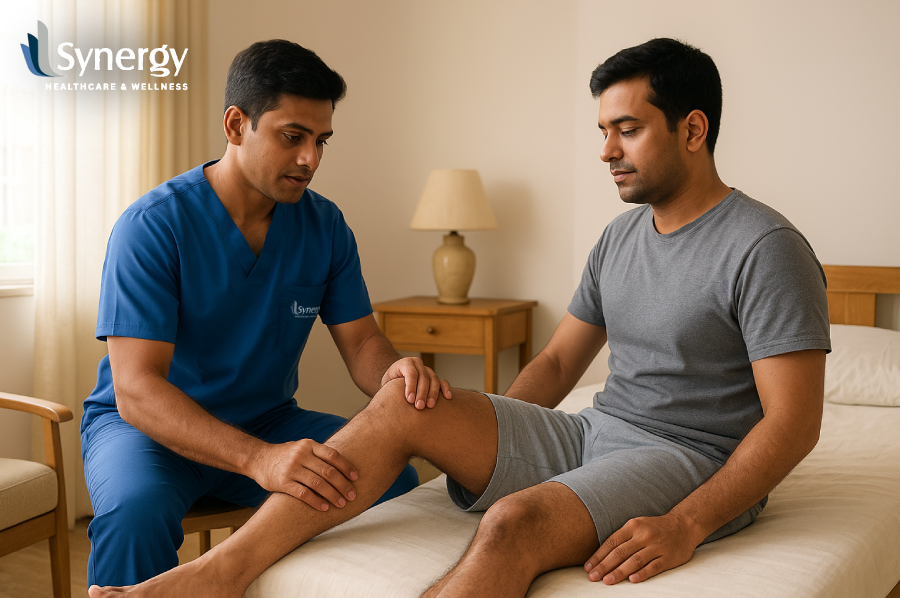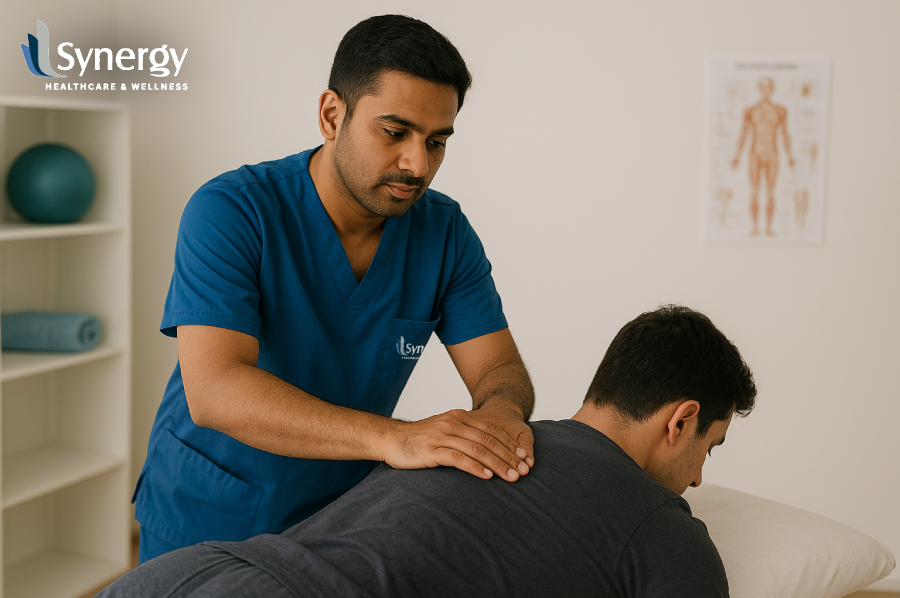For many people, getting to a clinic is the hardest part of recovery. Home physiotherapy removes that barrier and brings care to your living room. It saves travel time, suits family routines, and lets your therapist tailor exercises to the furniture, stairs, and spaces you use every day. The value comes from steady practice, fewer missed sessions, and practical guidance that fits real life. If you searched for Home Physiotherapy In Chennai, Physiotherapy At Home Chennai, or Benefits Of Home Physiotherapy, this article sets out what to expect and how to decide.
Let’s Begin
Pain and stiffness can drain energy before the day even starts. Adding traffic, parking, and long hours at work makes regular clinic visits difficult. Home physiotherapy offers another path. The therapist assesses you at home, sets a plan you can carry out with the things you already own, and checks that daily movements are safe. For many conditions, this is not a second choice. It is the simplest way to build consistency.
What home physiotherapy actually involves
A home visit is a structured clinical session. Your therapist begins with a careful history, then checks range of motion, strength, balance, and movement patterns. Portable tools may be used, but most of the work is active. You learn positions that ease pain, techniques to reduce strain in daily tasks, and a short routine with clear instructions. The best part is context. If a chair is too low, you adjust it together. If bed height makes getting up difficult, you practise a safer method right there.
Who is a good candidate
People recovering after surgery often benefit because travel is tiring and precautions matter. Older adults do well when familiar surroundings reduce the fear of falling. New parents, caregivers, and professionals with long commutes appreciate the time saved. Home physiotherapy also helps when pain itself makes sitting in a vehicle or waiting in a lobby uncomfortable. Children may engage better at home with familiar toys and shorter, focused drills.
How a typical home visit runs
The first session sets the plan. You discuss what activities matter most, such as climbing stairs without pain or turning the neck comfortably while riding a two-wheeler. The therapist examines you, explains the findings in plain words, and demonstrates two or three starter exercises with exact sets and repetitions. You practise them under supervision so that form and breathing are correct. The visit ends with advice on posture, sleep positions, and how to schedule practice around meals and work. Reviews build on this start, progressing the load and adding variety as you improve.
Is it as effective as clinic care?
For many musculoskeletal and post-surgical conditions, yes. Recovery depends on the right plan, correct technique, and regular practice. Those ingredients can be delivered at home. Clinics are useful when specialised machines or large equipment are required or when multiple therapists need to see you on the same day. Many patients follow a hybrid approach. Early sessions happen at home for comfort and safety, then occasional clinic visits are added for advanced testing or progress checks.
Costs, time, and real value
Home care may include a travel component in the fee, but it often saves money and stress by cutting missed appointments and extra rides. You also gain the presence of a family member who can learn how to assist safely. Because your routine is designed in the room where you will do it, the plan tends to stick. Consistency is what turns exercises into results.
Safety and quality checks
Good providers verify identity, qualifications, and background. You can expect clear communication, punctuality, and simple hygiene practices, such as hand washing and equipment sanitation. Your therapist will also scan the room for loose rugs, poor lighting, and clutter that could raise fall risk. If any exercise causes sharp pain or numbness, the plan is adjusted that day.
Preparing your space
You do not need a gym. A firm chair without wheels, a stable table edge, a mat, and a belt or towel are enough for most programmes. Keep a bottle of water nearby and ensure there is good lighting. Pets can be moved to another room during balance work. Small details make practice calm and repeatable.
How progress is measured at home
Numbers matter. You and your therapist can track pain on a 0 to 10 scale, shoulder reach in degrees, time to stand from a chair five times, single-leg balance time, or steps per day. These measures are simple to repeat in the same corner of the room, so you see change rather than guess at it. When the numbers improve, your exercises advance to build resilience.
Get Home Physiotherapy in Chennai with Structured Support
Synergy Healthcare and Wellness provides home physiotherapy across Chennai with a straightforward process. We begin with a phone triage to understand your needs and confirm whether you are suitable for home care. The first visit includes a full assessment, explanation of findings, and a written plan with video support where helpful. Sessions combine manual techniques when indicated with targeted exercise and practical coaching for daily tasks such as stair use, floor sitting, and desk setup. Caregivers are welcome to observe so they can lend a hand safely. If your progress would benefit from specific clinic-based testing, we arrange that as part of the same pathway.
Summing Up
Home physiotherapy is not only convenient. It is a sensible way to turn advice into daily habits that last. When treatment fits your space, your schedule, and your family’s rhythm, you are more likely to keep going. For many conditions, it is the most direct route to fewer symptoms and better movement. If you prefer a mixed plan, combine home sessions with occasional clinic reviews. The right choice is the one you can sustain.
FAQ’s
1. Do I need special equipment for home sessions?
No. A chair, a mat, and a towel are enough for most programmes. Your therapist will bring any extra tools needed.
2. How many sessions per week are typical?
This varies with the condition. Many people start with two or three sessions each week, then step down as home practice becomes steady.
3. What if I feel worse after a session
Mild soreness that settles within a day can be expected when you begin. Sharp pain or symptoms that linger beyond agreed limits should be reported so the plan can be adjusted.
4. Can home care handle post-surgical protocols?
Yes, provided the therapist follows the surgeon’s guidelines. Home visits are often ideal when mobility is limited and precautions are strict.
5. Does Synergy offer home sessions?
Yes, we do offer at-home care and online consultation.





